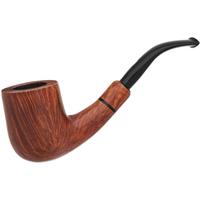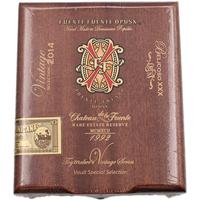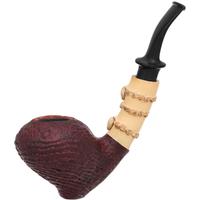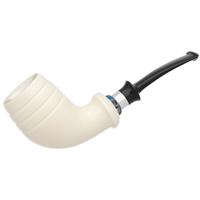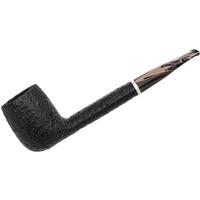Everyone can possibly find themselves sensitive to various blends, I believe Red Virginias to be the worst of the bunch, given their PH balance.
The PH balance is a real thing, in how a blend can bite.
When in doubt dry it out, even crispy to the touch if you pinch a clump, when you’re either uncertain, or you want to be cautious of bite.
Just experiment and keep your tabac on the drier side when pinching it, to test for moisture, which should be very little stick to it, or dry.
If the blend is new to you, and you are uncertain about it, going drier with the tabac is always safer.
So starting out drying, when you take a clump and pinch it, it’s crispy, no moisture at all.
Go crispy in the beginning, and in time you can experiment with the moisture.
Barely light the tabac, don’t torch it and sip small slow sips, you shouldn’t be blowing big clouds of smoke with a pipe, and don’t puff fast, and don’t worry about keeping the pipe lit.
By Russ Ouellette
Tongue Bite is the same as Tongue Burn– Most people who complain of tongue bite aren’t experiencing bite at all; they’ve simply burnt their tongues. Tongue bite is a chemical reaction, usually caused by alkalinity. The sensation is similar to a cramp and is different than “leather tongue” (a sore, heat damaged tongue). The common causes of leather tongue can include improper packing, smoking too fast and tobacco that is either too dry or too moist, among others. True tongue bite doesn’t leave the tongue raw and bumpy as is common following heat damage. Since Burley can produce alkaline smoke, it is commonly targeted as the culprit regarding bite, but other tobaccos can have a higher pH as well.
———————————————
Tongue Bite
https://clarkdavis.me/2018/01/21/tongue-bite/
What is it?
The short answer is the dreaded tongue bite.
Tongue bite is generally described as a condition caused by pipe smoking that results in a sore, tender or irritated tongue. It’s not limited to the tongue however, as other oral tissues can be effected. Tongue bite has been the bane of pipe smokers since the Columbus expedition brought this practice back to Europe from the New World. The feeling has been described in various ways: “a burning sensation,” “raw tongue,” “like an acid burn,” and so on. The severity of tongue bite can range anywhere from a minor irritation lasting a few hours to a major discomfort lasting for several days. Needless to say, it’s something every pipe smoker has probably experienced, and are always on guard against.
What causes it?
If you ask ten pipe smokers, “What is the cause of tongue bite,” you’re likely to get ten different answers. I’ve heard everything from bad packing technique to moist tobacco to low quality pipe. All of these answers essentially boil down to one thing, over heating. This over heating can lead to a thermal burn, i.e. the smoke/steam coming into your mouth is too hot, or a chemical burn caused by an imbalance of the smoke pH. The causes of over heating are the same regardless of what’s actually doing the burning, but for the sake of education, lets dive into the two theories
Thermal Burn
The thermal burn theory is pretty easy to wrap your head around. You puff too fast, the smoke and steam from the tobacco becomes too hot and it scalds the inside of your mouth. This would most commonly happen during initial lighting and relighting. Getting a good initial light, or trying to burn every last shred of tobacco in your bowl can cause a pipe smoker to draw too heavily on the pipe, bringing the full heat of the match or lighter directly into their mouth. This over heating can also be caused when the tobacco is packed too tightly or too loosely. A tight pack interferes with the draw on the pipe, which makes it difficult to keep the pipe lit, which in turn causes you to draw too heavily and over heat the pipe. A bowl with tobacco packed too loosely is also difficult to keep lit because there isn’t enough contact between the tobacco pieces to keep it burning evenly down the bowl, often a tamper is used to remedy this, but if it’s tamped too hard, you’re right back to the tight pack scenario.
Chemical Burn
The chemical burn theory boils down to an imbalance in the pH of your particular tobacco smoke. When smoke from tobacco has a higher degree of alkalinity, it will produce a painful irritation of the tongue, regardless of its temperature. A principal cause of alkaline smoke is a tobacco containing little or no sugar, such as Burley. Soil chemistry where the tobacco was grown can also influence the pH of the leaf. Virginias and other tobaccos with a high sugar content generally produce an acidic smoke, which is easier on the mucous membranes and tongue. However, if combustion temperature goes too high, then the hydrocarbons (especially sugars) join with oxygen to form water and turn neutral, thus leaving the alkaline components to predominate in the smoke.
This simply means when this type of tongue bite occurs, it is the result of a chemical reaction, it has nothing to do with heat or the temperature of the smoke. Even if you were to freeze the smoke and make it ice cold, the high alkalinity would still produce a chemical irritation.
Well-known master tobacconist, G. L. Pease, points out these details concerning common tobaccos and their pH and sugar levels:
- Burley and Virginias have a similar pH of 5.4 to 5.8 (although Virginias have significantly more sugar in the form of dextrose, about 0.2% for Burleys and approximately 22% for bright Virginia).
- Turkish is somewhat more acidic, generally about pH 4.9, while containing only about 12% sugar.
- The alkalinity of the water soluble ash from Burley, however, is 2-3 times that of Virginia.
Pease also explains that when sugars are burned at higher temperatures, they tend to produce smoke with a higher pH than when burned more slowly. This can cause Virginias to smoke “hot” when puffed furiously, while gentle smoking will liberate the sugars into the water which is produced during combustion of the tobacco. Maintaining a delicate balance between steam generated by the vaporizing water in the tobacco and the water vapour produced as a byproduct of normal combustion is very important to getting a sweet, cool smoke. If the tobacco is too wet, too much steam is generated, dilluting the “sweetness” of the smoke, and resulting in caloric heat. If the tobacco is too dry, the smoker may tend to smoke it hot, creating an alkaline smoke from the burning of sugars.
Tobaccos that are flue-cured, such as Virginias, or those exposed to a high heat soon after the leaf is removed from the plant, will have a high sugar content. This is because metabolic processes within the leaf, and microorganisms that live there, are killed by the heat before the sugar is consumed.
Sun-cured or air-cured tobaccos, on the other hand, have a low sugar content, because most of the sugar is either metabolized within the leaf itself or consumed by microorganisms between the time the leaf was removed from the plant and the end of the initial curing process.
In light of this, one would expect Virginias and other heat-cured tobaccos to be gentle on the tongue, and Burley and other slowly-cured tobaccos to be harsh on the tongue. But this is not necessarily the case. When the leaf burns in your pipe, the higher the combustion temperature, the more complete the combustion, and the more hydrogen ions combine with oxygen to form neutral water. Put differently, the higher the burn temperature, the more alkaline the smoke, as the acidic hydrogen is used to form neutral water and the alkaline components dominate.
The irony, of course, is that tobaccos rich in sugar tend to burn easily, fast, and hot, while those low in sugar tend to burn slower and cooler. If you smoke a sugar-rich Virginia hot, instead of pleasant acidic smoke, you will experience caustic alkaline smoke that bites with a vengeance. And if you smoke Burley, which is naturally higher alkaline, in a gentle, cool manner, you will be rewarded with an acidic smoke that will comfort your tongue. All of this can be further modified if the blender has applied extra sugar or honey or cased the tobacco with rum, for example. These additives can tilt the balance of the tobacco toward the acidic pH.



